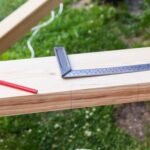What does a woodworking jointer do? A woodworking jointer is a crucial tool in the carpentry and woodworking industry, used to create flat surfaces along the edges of lumber. This tool is essential for ensuring that wood pieces fit together seamlessly, resulting in high-quality and professional-looking finished products.
Woodworking jointers are an indispensable part of any woodworker’s toolkit. They play a significant role in producing straight and smooth edges, which are vital for creating strong and durable joints in woodworking projects. Whether you’re working on furniture, cabinetry, or other wooden structures, using a woodworking jointer can elevate the quality and precision of your work.
In this article, we will delve into the world of woodworking jointers, exploring their functionality, types, benefits, common uses, as well as providing useful tips for using and maintaining these tools. By understanding the purpose and importance of woodworking jointers, you’ll gain valuable insight into how they can enhance the quality and efficiency of your woodworking endeavors.
So let’s dive into the world of woodworking jointers and uncover all there is to know about this essential tool for woodworkers.
What Is a Woodworking Jointer
A woodworking jointer is an essential tool in any woodworker’s arsenal, used for creating perfectly flat and smooth surfaces on wooden boards. It is particularly useful for preparing wood to be used in projects such as furniture making, cabinetry, and other woodworking endeavors. This tool plays a crucial role in ensuring that the pieces of wood being worked on are straight, level, and free from imperfections, ultimately leading to high-quality finished products.
Basic Functionality of a Woodworking Jointer
A woodworking jointer works by using a rotating cutterhead equipped with sharp blades to trim and flatten the surface of a board. The board is passed over the cutterhead, which shaves off any uneven or protruding areas, resulting in a uniform and level surface. Additionally, the jointer can also be used to create perfect square edges on boards, allowing for seamless joining and assembly during woodworking projects.
- Eliminating warping and cupping: A jointer is effective in correcting any warping or cupping that may be present in a piece of wood.
- Creating smooth surfaces: The tool’s cutting action produces smooth and even surfaces that are essential for creating high-quality finished products.
- Squaring edges: By running boards through the jointer, woodworkers can ensure that they have perfectly square edges, crucial for precise joinery work.
Woodworking jointers come in various sizes and configurations, including benchtop models suitable for smaller workshops and larger industrial-grade machines for professional use. Regardless of the specific type chosen, all jointers share the same fundamental purpose-ensuring that wood surfaces are flat, smooth, and ready for further processing or assembly.
How Does a Woodworking Jointer Work
A woodworking jointer is a crucial tool for any woodworker, helping to create flat surfaces on rough lumber and ensuring that edges are perfectly straight. But how does a woodworking jointer work exactly? Understanding the process and mechanics behind the tool’s operation can provide valuable insight into its functionality.
The primary function of a woodworking jointer is to flatten one face of a board and square up one edge, creating a smooth, even surface that is essential for high-quality woodworking projects. The tool achieves this by using a rotating cutter head with multiple sharp blades that removes small amounts of material from the wood as it passes through the machine.
To better understand how a woodworking jointer works, here are the basic steps involved in the operation:
- The woodworker starts by adjusting the depth of cut on the jointer to remove just enough material for flattening and squaring.
- The rough-sawn board is then fed into the jointer with the flattened face resting against the machine’s fence.
- As the board moves over the cutter head, it shaves off thin layers of material, gradually creating a flat surface along its length.
- The process is repeated for each side of the board until both faces are flat and one edge is perfectly squared.
Overall, a woodworking jointer works by consistently removing small amounts of material from rough lumber to achieve uniformity in thickness and create straight edges – essential characteristics for any successful woodworking project.
Furthermore, understanding how a woodworking jointer works allows woodworkers to use this tool effectively in their projects while ensuring safety precautions are followed. Practicing proper techniques when operating a jointer can significantly impact project outcomes and reduce risks associated with misuse or mishandling.
Types of Woodworking Jointers
Woodworking jointers come in a variety of types, each designed for specific tasks and projects. Understanding the different variations of woodworking jointers and their specific uses can help woodworkers choose the right tool for their needs.
One common type of woodworking jointer is the benchtop jointer, which is compact and portable, making it suitable for small workshops or on-site use. These jointers typically have a smaller cutting width, making them ideal for edge jointing narrow boards. They are also more affordable than larger stationary jointers, making them a practical choice for hobbyists and DIY enthusiasts.
Another type of woodworking jointer is the long-bed jointer, which features an extended bed for supporting longer workpieces. These jointers are favored by professional woodworkers who frequently work with longer boards or panels. The extended bed provides greater stability and support during the jointing process, resulting in smoother and more precise edges.
In addition to benchtop and long-bed jointers, there are also spiral cutterhead jointers, which utilize spiral-shaped cutter inserts instead of traditional straight knives. This design reduces tear-out and produces a superior finish on hardwoods and figured woods. Spiral cutterhead jointers are often considered an investment for serious woodworkers due to their higher cost but offer exceptional performance and quality.
| Types of Woodworking Jointers | Specific Uses |
|---|---|
| Benchtop Jointer | Ideal for edge jointing narrow boards in small workshops or on-site use. |
| Long-Bed Jointer | Favored by professional woodworkers working with longer boards or panels due to its extended bed providing greater stability. |
| Spiral Cutterhead Jointer | Utilizes spiral-shaped cutter inserts reducing tear-out and producing a superior finish on hardwoods and figured woods. |
Understanding the specific uses and functionalities of each type of woodworking jointer is essential in selecting the right tool to ensure efficient and high-quality results in woodworking projects. While some may prioritize affordability or portability, others may require precision or heavy-duty capabilities. By considering these factors, woodworkers can make informed decisions when choosing a woodworking jointer that best suits their unique needs.
Ultimately, having access to the right type of woodworking jointer can make a significant difference in the efficiency and quality of any woodworking project. Whether it’s creating seamless edges, flattening surfaces, or ensuring precision in joinery work, having the appropriate woodworking jointer can elevate the overall outcome of a woodworker’s efforts.
Benefits of Using a Woodworking Jointer
A woodworking jointer provides several benefits that make it an essential tool in woodworking projects. One of the main advantages of using a jointer is its ability to create straight and smooth edges on boards, which is crucial for producing high-quality furniture, cabinets, and other wood products. By flattening and squaring the edges of boards, a jointer ensures that they fit together seamlessly, resulting in strong and visually appealing joints.
Another benefit of using a woodworking jointer is its capability to correct any warping, twisting, or cupping in lumber. This is especially important when working with rough-sawn wood, as it allows woodworkers to start with a flat and uniform surface before moving on to other processes such as planing and joining. Additionally, a jointer can be used to taper or chamfer the edges of boards, adding decorative details to woodworking projects.
In terms of safety, using a jointer can also prevent accidents caused by working with irregularly shaped or uneven boards. By creating flat and square surfaces, the risk of kickback and other mishaps is significantly reduced. Overall, the precision and control provided by a woodworking jointer contribute to improved efficiency and quality in woodworking projects.
| Advantages | Details |
|---|---|
| Straight and smooth edges | Creates seamless joints and enhances the overall appearance of wood products |
| Corrects warping and twisting | Makes rough-sawn wood suitable for further processing |
| Enhances safety | Reduces the risk of accidents while working with irregularly shaped boards |
Common Uses for a Woodworking Jointer
A woodworking jointer is a versatile tool that can be used for a variety of tasks and projects in a woodworking shop. One of the most common uses for a jointer is to create flat and straight edges on boards or lumber.
This is essential for ensuring that pieces fit together properly when assembling furniture, cabinetry, or other woodworking projects. Additionally, a jointer can be used to square up the edges of boards, making it easier to join them together with strong and seamless joints.
Another common use for a woodworking jointer is to create perfectly flat surfaces on boards. This is important for ensuring that the finished piece of furniture or project has smooth and even surfaces. By running the boards through the jointer, woodworkers can remove any imperfections or inconsistencies, resulting in a professional-looking final product.
In addition to edge jointing and surface flattening, woodworking jointers can also be used to create rabbets, dados, and other specialized joints in wood. These joints are commonly used in cabinetry, shelving, and other woodworking projects where strong and precise connections are required. By using different blades and settings on the jointer, woodworkers can create these joints with precision and accuracy. Overall, the versatility of a woodworking jointer makes it an essential tool for anyone working with wood.
Tips for Using a Woodworking Jointer
Woodworking jointers are powerful tools that can be extremely useful for woodworkers of all skill levels. Whether you are a beginner or an experienced craftsman, there are certain tips and techniques that can help you make the most of this tool and achieve precise and professional results in your woodworking projects.
Understanding the Basics of Operation
Before using a woodworking jointer, it is essential to understand its basic functionality and operation. A jointer is designed to create a flat surface on the face or edge of a board, as well as to straighten and square up the edges. This tool consists of an infeed table, outfeed table, cutter head, and fence. Understanding how each component works together to achieve the desired result is crucial for effectively using a woodworking jointer.
Selecting the Right Cutter Head and Blades
When using a woodworking jointer, it is important to select the right cutter head and blades for the specific task at hand. The type of wood being worked on, as well as the desired finish and level of precision, will determine the appropriate cutter head and blade options. For example, spiral cutter heads are known for their smooth cutting action and reduced tear-out in figured wood, while helical cutter heads provide quieter operation and longer maintenance intervals.
Proper Safety Measures
Safety should always be a top priority when using any power tool, including woodworking jointers. It is crucial to wear protective gear such as safety glasses and ear protection. Additionally, keeping hands at a safe distance from the cutter head and following proper feeding techniques can help prevent accidents or injuries during operation. Lastly, ensuring that the jointer’s knives are sharp and properly adjusted can minimize kickback and ensure smooth cutting action.
By following these tips for using a woodworking jointer, both beginners and experienced woodworkers can enhance their skills and achieve exceptional results in their projects while ensuring their safety throughout the process.
Maintaining a Woodworking Jointer
Regular Cleaning and Dust Removal
One of the most important aspects of maintaining a woodworking jointer is regular cleaning and dust removal. Sawdust, wood shavings, and other debris can build up on the jointer’s surface, blades, and fence, affecting its performance and accuracy. It is essential to clean the jointer after each use to prevent the buildup of sawdust, as this can lead to rusting or corrosion over time.
Blade Maintenance
The blades of a woodworking jointer are crucial to its function, as they are responsible for creating flat surfaces on wood edges. Regular inspection and maintenance of these blades are necessary to ensure that they remain sharp and free from damage. Dull or damaged blades not only affect the quality of the woodwork but can also pose safety hazards. Sharpening or replacing the blades when necessary is vital for optimal performance.
Alignment and Calibration
Proper alignment and calibration are essential for a woodworking jointer to function accurately. Over time, the jointer’s tables may become misaligned, affecting the precision of the cuts. Regular checking and adjustment of the infeed and outfeed tables, as well as the fence, ensure that they are parallel to each other and at the correct angle. Additionally, calibrating the depth settings accurately guarantees consistent results when using a woodworking jointer.
By emphasizing proper maintenance practices such as regular cleaning, blade care, and alignment checks, woodworkers can ensure that their woodworking jointers continue to perform efficiently and produce high-quality results. Neglecting maintenance can not only compromise the accuracy of the tool but also shorten its lifespan. A well-maintained woodworking jointer is an invaluable asset in any woodworking shop, allowing for precise edge alignment and surface flattening in various projects.
Conclusion
In conclusion, a woodworking jointer is an essential tool for any woodworker, whether they are a beginner or an experienced professional. This versatile tool serves multiple purposes, including flattening and straightening the edges of lumber, creating smooth and uniform surfaces for joinery, and ensuring that boards fit together seamlessly. By utilizing a woodworking jointer, woodworkers can achieve precise and high-quality results in their projects.
The varied types of woodworking jointers available in the market cater to different needs and preferences. From benchtop jointers to larger floor-standing models, there is a woodworking jointer suitable for every workshop size and project scope. Additionally, the benefits of using a woodworking jointer are numerous, including improved accuracy in woodwork, reduced waste of materials through better fitting joints, and increased efficiency in the overall woodworking process.
When using a woodworking jointer, it is important to adhere to safety guidelines and follow proper maintenance procedures. By doing so, woodworkers can ensure the longevity and performance of their tool while also prioritizing their safety in the workshop. Overall, understanding what does a woodworking jointer do and how it can enhance woodworking projects is essential for anyone passionate about working with wood.
Frequently Asked Questions
Do I Need a Jointer for Woodworking?
A jointer is a useful tool for woodworking, especially when working with rough lumber. It helps to create flat and smooth surfaces on wood, which is crucial for creating strong and seamless joints in woodworking projects.
What Is the Point of a Jointer?
The main purpose of a jointer is to flatten one face of a board and square up one edge. This makes it easier to work with the wood and ensures that it will join together accurately when constructing furniture or other woodworking projects.
What Can You Make With a Jointer?
With a jointer, you can make wooden boards perfectly flat and smooth, ready to be used in various woodworking projects such as tables, cabinets, shelves, doors, and more. It’s an essential tool for ensuring precision and quality in woodworking craftsmanship.

Hi everyone! I’m a woodworker and blogger, and this is my woodworking blog. In my blog, I share tips and tricks for woodworkers of all skill levels, as well as project ideas that you can try yourself.





